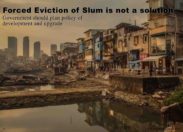While searching for motivational stuff on YouTube, I stumbled over an inspirational video by Bruce Lee – “Be like Water”. Water is a formless, shapeless liquid that can flow and that can crash. It is a basic necessity for all living beings. Clean drinking water has been recognized as a basic human right by UN in 2012 (source: www.un.org/waterforlifedecade) Unfortunately, almost 100 million homes in India lack access to clean and safe drinking water. 20% of the homes in urban India doesn’t have access to any potable water. Pity!!! Isn’t it.
For Rural area, by the guidelines, it is recommended that about 70 litres of water per capita per day will be needed to drink, cook, bathe and water the livestock. The current service level is 40 litres per capita per day. The 2017-18 budget has allotted Rs. 6050 crores to Ministry of Drinking Water and Sanitation to meet this.
On one hand the natural resources for Water are drying up quickly , on the other hand most the available water is polluted by bio and chemical waste. Water Borne diseases are the leading cause of death among children. Moreover, dirty water transmits diseases like diarrhoea, cholera, typhoid etc.
The stakeholders in this problems are many – Government, Companies, NGOs, Communities, Foundations, End users. While the government and many of the organizations (both for profit and not for profit) have realized the problem and is taking steps towards tackling it. It will take a lot more corporates and NGOs to join hands and eradicate this problem. For FMCG and heavy manufacturing companies investing their CSR quota in this problem might prove to be a strategic advantage.
The problem can be divided into 4 subproblems – one, bringing the water to the end users, two, making the water potable, three, augmenting and conserving water and four, tracking the actual progress.
Below are few suggestions for these sub problems one by one which can be either implemented or extrapolated.
Hand Pump versus Pipe lines: Hand pumps are more economical to install and maintain in rural areas. It doesn’t need a high skilled labour to fix it. This can save a lot of government’s money.
Underground Injection: The underground water can be pre-treated by injection of water-cleansing “good” chemicals, so that the water hatched is already safe to drink.
Water ATMs: This is a new concept of a private start-up Pi-Lo which has Water ATMs which dispense RO purified water at just Rs. 2 for 250ml. These kind of solutions need to be implemented at big scales.
Water Credits: Water based small loans provision option might be introduced with the help of co-operative banks and micro finance institutions. This will help the end user to build tanks or other water storage.
Conserving Water: The farmers can be trained in rain water harvesting and the ways for irrigation on periodic basis. Also, Waste water treatment can be introduced and volunteers can be selected among the users to work for this.
Behaviour Change Management: Having said much about the ways to bringing water to the households, the end user also needs to educated about taking the best advantage of this.
Reporting and Measuring: The gestation period of these solutions is long and also, end user will take time to adopt the new ways. The parameters must be defined to measure the progress so that the government and corporates can track the development.
Find a right partner: Not all corporates might know which is the best strategic project for them in this area. Finding a right NGO as a partner will help making good use of their money
Increase Community ownership: In the long run, more and more representatives from community itself should be encouraged to take ownership.
Encourage innovative approaches to tackle the problem: Government and Angel investors should encourage start-ups like Pi-Lo to come up with more innovative solutions like Water ATMs.
In conclusion, the problem is gigantic but if all the stakeholder join hand and bond together to tackle this, it can be resolved within a decade.
jnicsr #jnicsrtimes #nikhilkumarsarojaz
www.jnicsr.com | www.jnicsrtimes.com







Leave a Reply